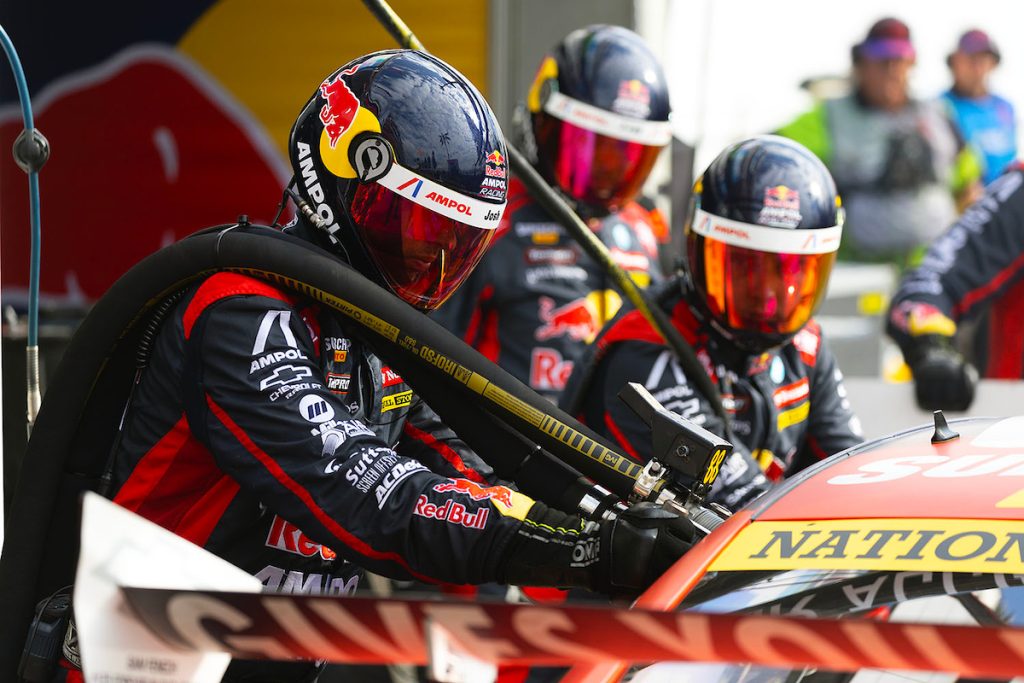

That is the question we put to you in this week’s Pirtek Poll, after the idea was proposed by Roland Dane in last week’s Roland’s View column.
The fuel drop was instituted at the Gold Coast 600 of 2013, the first year of the Car of the Future era, as a means of making up for economy disparities between the engines of the day.
It became a fixture of non-enduro refuelling races in 2014 and has remained in place ever since, meaning that cars will ordinarily have the same aggregate pit lane dwell time as each other in any given such encounter.
Last year, though, a compulsory pit stop count was axed for the first enduros of the Gen3 era, whereas a minimum of seven had previously applied at the Bathurst 1000.
That rationale was that the Camaro’s 5.7-litre pushrod engine and the Mustang’s 5.4-litre quad cam unit showed no material difference in consumption, although it came to pass that tyre life dictated strategy at both Sandown and Mount Panorama.
Come the Gold Coast 500, however, and the fuel drop was back, with each entry obliged to take on a total of 100 litres across at least two pit stops during each of the two races.
As it stands, Supercars is yet to confirm formats for 2024, but we want to know what you think.
Dane wrote last week, “Minimum drops are now unnecessary if, as we’re told, the fuel economy of both brands of car is near identical.
“Take a 250km race, for instance. Limit the fuel tank size to 100 litres (or less) and let everyone get on with it.
“No other rules. Stop for whatever tyres and fuel you decide.
“Keep us guessing, rather than having commentators telling us what’s going to happen all the time.”
Removing the drop would be consistent with a recent trend towards more strategic freedom.
Not only were the CPS counts axed for last year’s Sandown and Bathurst 1000, the fuel drop in the night race at Sydney Motorsport Park could have been taken in just the one pit stop, although all ended up doing at least two.
Of course, under a technical ruleset whereby every car in the field is, if not identical in spec to each other, then certainly paritised as closely as possible, the sporting outcoming will primarily be determined by driver skill, pit crew skill, and strategy.
Removing the fuel drop would thus create greater unpredictability in the outcome, according to one school of thought.
The fuel drop can be used strategically, of course, but it tends to box teams into similar strategies.
So, should Supercars scrap the fuel drop and, if so, how far should it go?
In a 200km or 250km race (ie those which require refuelling), should Supercars also refrain from even setting a CPS count? (Note in 2023 that the count was necessary to maintain a Gen2-style format given the drop figure was less than cell capacity)
Depending on the fuel cell capacity and consumption, teams could have the option of trying to get through on a one-stopper only.
What do you think? Cast your vote in this week’s Pirtek Poll.




















Discussion about this post